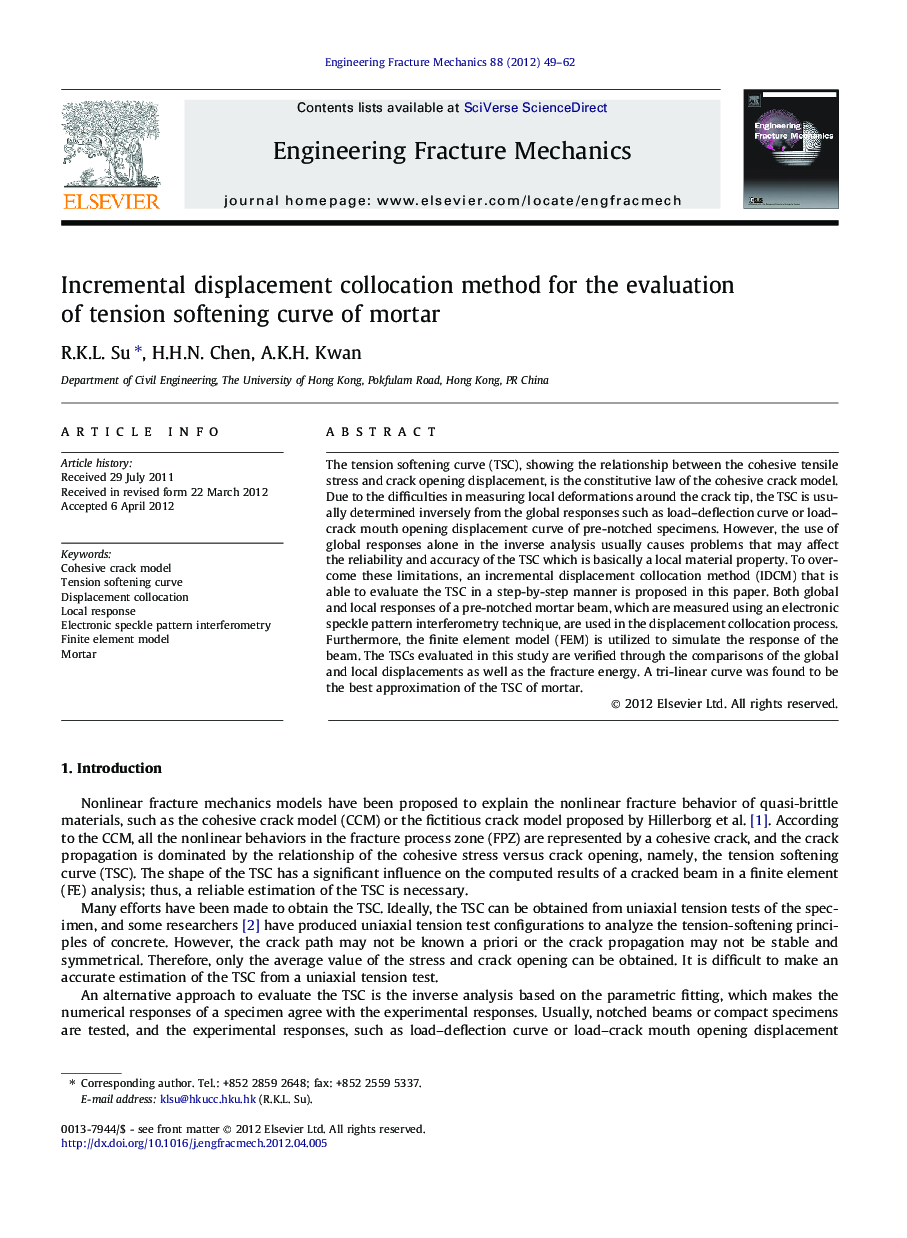| Article ID | Journal | Published Year | Pages | File Type |
|---|---|---|---|---|
| 770702 | Engineering Fracture Mechanics | 2012 | 14 Pages |
The tension softening curve (TSC), showing the relationship between the cohesive tensile stress and crack opening displacement, is the constitutive law of the cohesive crack model. Due to the difficulties in measuring local deformations around the crack tip, the TSC is usually determined inversely from the global responses such as load–deflection curve or load–crack mouth opening displacement curve of pre-notched specimens. However, the use of global responses alone in the inverse analysis usually causes problems that may affect the reliability and accuracy of the TSC which is basically a local material property. To overcome these limitations, an incremental displacement collocation method (IDCM) that is able to evaluate the TSC in a step-by-step manner is proposed in this paper. Both global and local responses of a pre-notched mortar beam, which are measured using an electronic speckle pattern interferometry technique, are used in the displacement collocation process. Furthermore, the finite element model (FEM) is utilized to simulate the response of the beam. The TSCs evaluated in this study are verified through the comparisons of the global and local displacements as well as the fracture energy. A tri-linear curve was found to be the best approximation of the TSC of mortar.
► A new displacement collocation method is developed for determining TSC. ► Global and local responses are used in the collocation process. ► The TSCs are verified by comparing displacement responses and fracture energy. ► A tri-linear curve is found to be the best approximation of the TSC of mortar.
